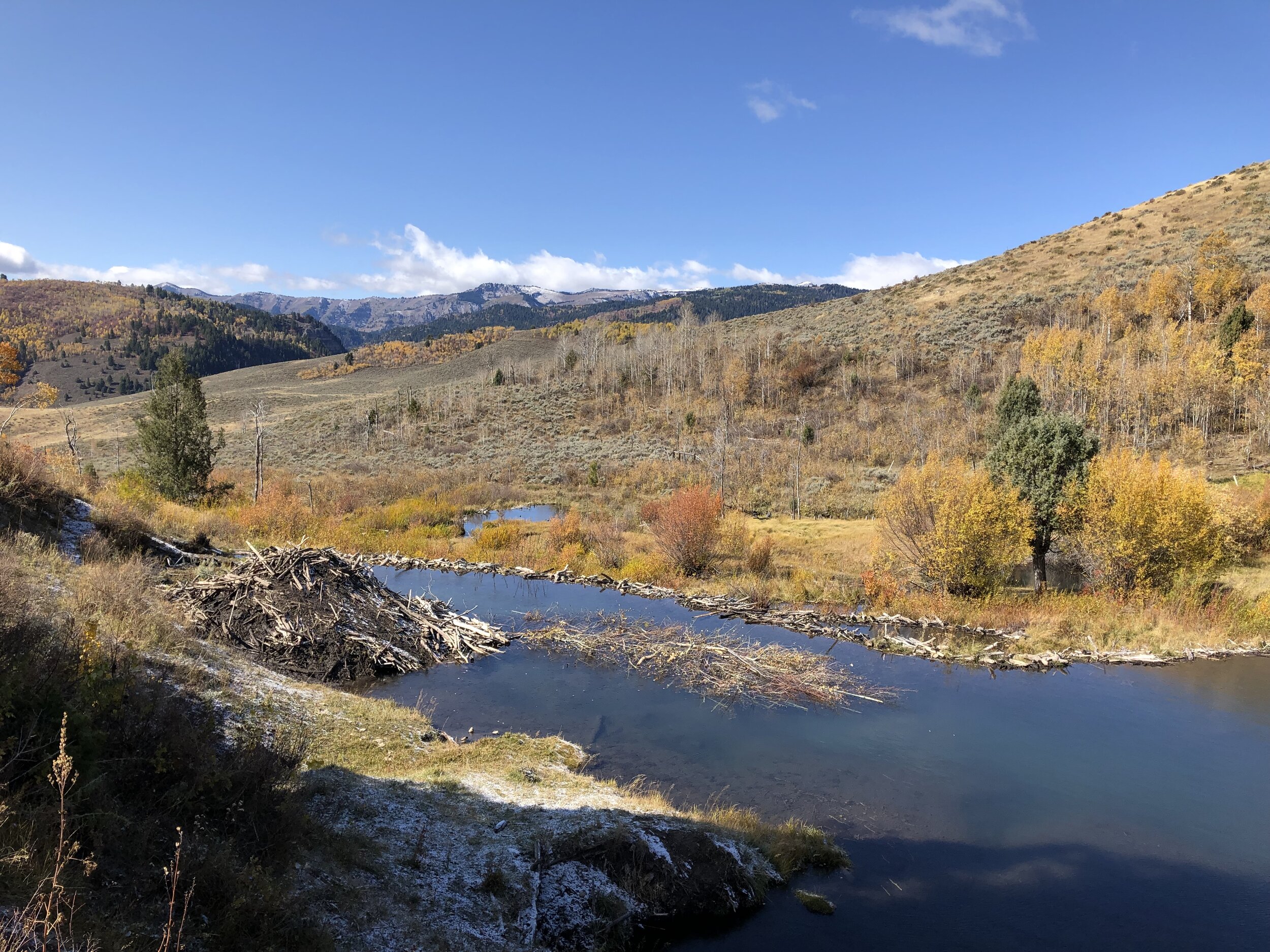
Beavers are Water Wardens
Beaver Benefits
Beavers are Water Wardens
Beavers engineer land and water when they create dams, ponds, and canals. These features increase water storage above and below the ground.¹ When beaver dams slow water, it has more time to flow downward into the soils, recharging groundwater reserves.² This creates three levels of water storage: the surface water, the hyporheic water (water flowing in the soils just under the surface), and the deeper groundwater that replenishes aquifers.³ Storing more water in the land benefits not only beavers but many other plants, animals, and humans.⁴
From droughts to floods
“Beavered” land slows down water, which helps regulate both low and high flows.⁵ During droughts, water is held in ponds and released slowly downstream, so streams are less likely to run dry. During floods, the many intricate canals and ponds can spread the water out over a larger area.⁶ This helps prevent water from rushing downstream all at once.
Beavers dig canals to connect their ponds to nearby food sources.
Beavers excavate sediment to use in the dam, increasing how much water is stored in the pond.⁷
Water drops sediment when it slows, cleaning the water and improving habitats.
Porous dams slow water but do not stop it completely, which helps keep streams flowing.⁸
Scientific Citations
1 - Brazier RE, Puttock A, Graham HA, Auster RE, Davies KH, Brown CML. Beaver: Nature's ecosystem engineers. WIREs Water. 2021; 8:e1494. https://doi.org/10.1002/wat2.1494
2 - Karran, D. J., Westbrook, C. J., & Bedard‐Haughn, A. (2017). Beaver‐mediated water table dynamics in a rocky mountain fen. Ecohydrology, 11(2). https://doi.org/10.1002/eco.1923
3 - Illustration of the Hyporheic Zone, from D. Tonina and J. M. Buffington, 2009, Hyporheic Exchange in Mountain Rivers I: Mechanics and Environmental Effects. Geography Compass 3 (2009). https://doi.org/10.1111/j.1749-8198.2009.00226.x
4 - Dewey, C., Fox, P., Bouskill, N., Dwivedi, D., Nico, P., & Fendorf, S. (2022). Beaver dams overshadow climate extremes in controlling riparian hydrology and water quality. Nature Communications, 13(1). https://doi.org/10.1038/s41467-022-34022-0
5 - Westbrook, C. J., Cooper, D. J., & Baker, B. W. (2006). Beaver dams and overbank floods influence groundwater–surface water interactions of a rocky mountain riparian area. Water Resources Research, 42(6). https://doi.org/10.1029/2005wr004560
6 - Grudzinski, B., Cummins, H., & Vang, T. K. (2019). Beaver canals and their environmental effects. Progress in Physical Geography: Earth and Environment, 44(2), 189-211. https://doi.org/10.1177/0309133319873116
7 - Wright, J. P., Jones, C. G., and Flecker, A. S. (2002). An ecosystem engineer, the beaver, increases species richness at the landscape scale. Oecologia 132, 96–101. https://doi.org/10.1007/s00442-002-0929-1
8 - Westbrook, C. J., Cooper, D. J., & Baker, B. W. (2006). Beaver dams and overbank floods influence groundwater–surface water interactions of a rocky mountain riparian area. Water Resources Research, 42(6). https://doi.org/10.1029/2005wr004560

